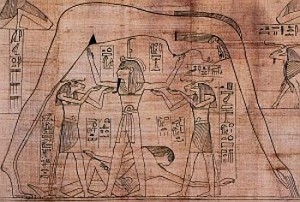
For centuries it was thought to be a legend, a city of extraordinary wealth mentioned in Homer, visited by Helen of Troy and Paris, her lover, but apparently buried under the sea.
In fact, Heracleion was true, and a decade after divers began uncovering its treasures, archaeologists have produced a picture of what life was like in the city in the era of the pharaohs.
The city, also called Thonis, disappeared beneath the Mediterranean around 1,200 years ago and was found during a survey of the Egyptian shore at the beginning of the last decade.
Now its life at the heart of trade routes in classical times are becoming clear, with researchers forming the view that the city was the main customs hub through which all trade from Greece and elsewhere in the Mediterranean entered Egypt.
They have discovered the remains of more than 64 ships buried in the thick clay and sand that now covers the sea bed. Gold coins and weights made from bronze and stone have also been found, hinting at the trade that went on.
Giant 16 foot statues have been uncovered and brought to the surface while archaeologists have found hundreds of smaller statues of minor gods on the sea floor.
Slabs of stone inscribed in both ancient Greek and Ancient Egyptian have also been brought to the surface.
Dozens of small limestone sarcophagi were also recently uncovered by divers and are believed to have once contained mummified animals, put there to appease the gods.
Dr Damian Robinson, director of the Oxford Centre for Maritime Archaeology at the University of Oxford, who is part of the team working on the site, said: “It is a major city we are excavating.
“The site has amazing preservation. We are now starting to look at some of the more interesting areas within it to try to understand life there.
“We are getting a rich picture of things like the trade that was going on there and the nature of the maritime economy in the Egyptian late period. There were things were coming in from Greece and the Phoenicians.
“We have hundreds of small statues of gods and we are trying to find where the temples to these gods were in the city.
“The ships are really interesting as it is the biggest number of ancient ships found in one place and we have found over 700 ancient anchors so far.”
The researchers, working with German TV documentary makers, have also created a three dimensional reconstruction of the city.
At its heart was a huge temple to the god Amun-Gereb, the supreme god of the Egyptians at the time.
From this stretched a vast network of canals and channels, which allowed the city to become the most important port in the Mediterranean at the time.
Last month archaeologists from around the world gathered at the University of Oxford to discuss the discoveries starting to emerge from the treasures found in Heracleion, named for Hercules, who legend claimed had been there.
It was also mentioned fleetingly in ancient texts.
Continue reading @ The Telegraph
SF Source IntelliHub April 30 2013
